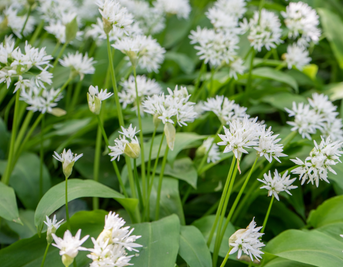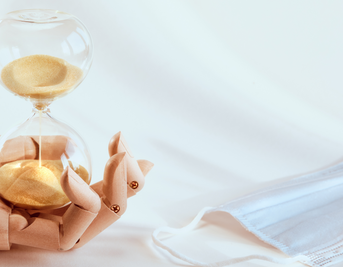Athlete's Foot, Foot and Nail Fungus
Athlete's foot the common name for a fungal infection called Tinea pedis which mainly affects the feet especially between the toes. However, the term ‘athlete's foot’ is misleading as it occurs in many people, not just athletes. A common associated condition with athlete's foot is a fungal nail infection.
If athlete's foot is not treated the lesion can become infected and extremely painful. Untreated the condition can also spread to other parts of the feet, nails, hands and can even affect the face.
What does it look like?
Athlete's foot causes a flaky, sometimes itchy, and occasionally red, rash between the toes and over the rest of the nearby foot. In most people it is confined to the spaces between the toes, but it spreads and affects more of the foot occasionally. The affected skin may be red, swollen and may contain sticky fluid. Patients may also experience a scaly dry rash on the bottom and sides of feet.
Cracks or "fissures" can occur between the toes which may sometimes bleed a little. A soft white smelly growth or fungal bloom is also often found between the toes.
Does it hurt?
Fungal infections can be incredibly uncomfortable. Symptoms include dry and itchy lesions, often unbearable itchy with a burning or stinging sensation. It certainly affects the quality of life.
What causes it?
Several dermatophytes, particularly Trichophyton rubrum, T. mentagrophytes, and Epidermophyton floccosum, which invade the "dead" outer layers of the skin, can also cause athlete's foot, and you may get more than one at a time. It can also be complicated by a secondary bacteria infection growing on the weakened, damaged skin.
What can I do?
It’s best to get a suspected case of athlete’s foot diagnosed by a doctor or qualified health practitioner. It is normally diagnosed from the visual appearance, but sometimes small skin samples from the area are sent to a laboratory for confirmation. Diabetic patients in particular should seek immediate professional and not try and treat this condition themselves.
What are the conventional chemical treatments?
The most effective chemical treatments these days are considered to be the imidazoles, eg miconazole and clotrimazole. You should speak to a pharmacist to select an appropriate treatment for you although you can buy a wide range of creams, powders and sprays without a prescription.
These kill the fungus and need to be applied until a full two weeks after the skin appears to be normal again to fully eradicate any lingering fungal spores.
Are herbal or natural remedies effective?
Many plants have natural antifungal properties. For example: Neem tree, tea tree, red thyme, lemon oil. These properties help plants, particularly those native to the humid Tropics, protect themselves against fungal invasion and disease. They may not act as fast as some conventional chemical treatments but are not known to have harmful side effects, particularly to the liver, that concern some people when considering long term use of medicines. Herbal preparations are best used as early as possible where their preventative qualities help to manage long term recurring infections.
Customer testimonials do report effective and satisfactory treatment and in many cases, such as tea tree oil, extensive scientific research has been carried out with positive results.
How do I prevent it?
Dry well between your toes after baths or showers. The feet are certainly more prone to athlete's foot when they are warm and moist, so it seems to occur more frequently in people that wear artificial soles and especially trainers and sports shoes. It helps to spend time with bare feet when you can. Not changing your socks on a regular basis can also encourage the build up of fungi in between the toes and try to wear socks made of natural fibres, especially cotton.
Will changing my diet help?
It can help some people to change their diet. This is worth considering especially if you have suffered from other fungal infections such as Candida, vaginitis or jock itch. Avoid bread and yeast products (including beer). Some people have found taking supplements to be helpful in boosting the immune system.
Acidophilus Take yogurt with live cultures or acidophilus capsules.
Beta Carotene 25,000 IU of beta carotene.
Garlic To boost the immune system and ward off fungal infections, take 6-8 capsules of garlic daily.
Vitamin B-complex Take tablets daily.
Vitamin C Take 500-3,000 mg of vitamin C in divided doses.
Vitamin D and E Take 400 IU each of vitamins D and E.
Zinc Take 15-50 mg of zinc. More than 15 mg of zinc should not be taken for more than a week or so without medical supervision as it may interfere with absorption of other minerals.
Why do I get it?
Some people seem more prone to athlete's foot than others. For example, people with excessively sweaty feet are more likely to develop fungal infections and should treat this condition. People prone to Candida, thrush and other fungi may also be more susceptible particularly after antibiotics and other treatments that destroy helpful bacteria.
Antibiotics can compromise the immune system by killing the good bacteria with the bad, leaving the person susceptible to infection. Without the good bacteria, the intestines can't synthesize the B vitamins which help enhance the immune system. To remedy this situation, eat several servings of yogurt with live cultures daily and take a high dosage of the B vitamins to rebuild your flora and help fight infection.
In general fungi thrive on moist, warm environments. Which is why this condition usually occurs in between toes due to an accumulation of moisture. Bruising, injuries or cracks in the skin can allow entry for the fungus.
There is probably a personal predisposition to develop it. Many people have the fungus present on their skin but are unaffected by the microscopic organism. While it does not necessarily spread like wildfire through a family, it can nevertheless be spread between individuals. A common point of infection is bathrooms, showers, swimming pools and changing rooms so wear slippers or shoes.
Our Natural Treatment Suggestions
• At the first sign of a flare up or after sports, hiking or other shoe-bound exertion use Funki Foot Soak and soak your feet for 15 minutes in a mild case but up to half an hour if you are prone to severe infections. This will often help to avoid symptoms appearing completely.
• If symptoms persist use a weekly Foot Soak in combination with Funki Foot Ointment.
• Apply Funki Foot Ointment to the affected area in the morning and evening after bathing.
• Keep using the Funki Foot Ointment for two weeks after symptoms have gone.
• Dry the feet thoroughly after bathing especially in between the toes.
• Use a starch powder in socks and shoes to keep feet really dry.
• Wear cotton socks to absorb moisture and allow feet to breathe and change them daily.
• Funki Foot Ointment can be used on hands although it has a strong medicinal smell.
• Funki Nail Oil can be used to treat fungal nail infections naturally. The oil must be applied twice a day and particularly after bathing. It should be used for at least six months, in some cases a year, until the nail has grown from the nail bed to the tip and completely renewed itself. This is to avoid later re-infection from residual fungus.
• As with any treatment, test a small amount for 24 hours on a small patch of skin first, to check that you are not sensitive to or allergic to a particular ingredient.
Please note that this is general advice and not a treatment recommendation. Please ask your doctor or qualified health practitioner for diagnosis and advice.

